I first visited Yellowstone in the summer of 2021, when the park was experiencing record-breaking visitor numbers as Americans rediscovered domestic travel. Despite the crowds, I managed to find peaceful moments in the early mornings and late evenings when most tourists had retreated to their lodges.
What makes Yellowstone special is how it reveals something new each time you visit. From the predictable eruptions of Old Faithful to the rainbow-colored hot springs, the wide-open valleys where bison roam freely to the deep canyons carved by rushing rivers, this park holds natural wonders around every bend. The changing seasons paint entirely different pictures too – summer’s green meadows transform into winter’s snow-covered wonderland.
So, what are the best places to visit in Yellowstone? I’ve combined my personal experiences from multiple visits with insights from local park rangers to create this carefully curated list of must-see spots.
- Best thermal area: Grand Prismatic Spring
- Underrated wildlife spot: Lamar Valley
- Best for photographers: Old Faithful
- Best for hiking: Mount Washburn
- Best for families: Mammoth Hot Springs
- Best for nature lovers: Hayden Valley
Old Faithful Geyser
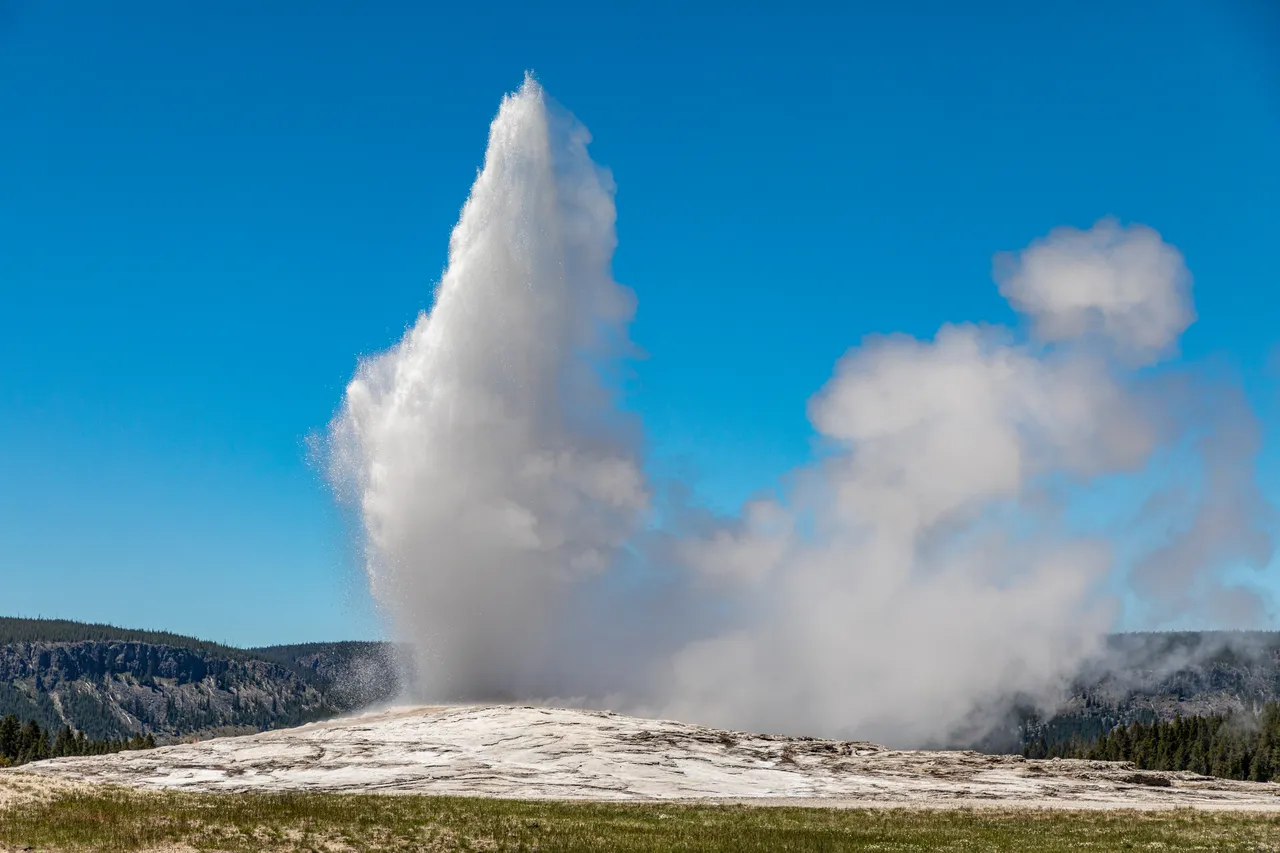
No trip to Yellowstone is complete without watching Old Faithful Geyser put on its famous show. Located in the Upper Geyser Basin, this natural wonder shoots boiling water up to 180 feet into the air every 90 minutes like clockwork, making it one of the most predictable geothermal features in the world. Surrounded by wooden boardwalks and viewing areas, you can join hundreds of other visitors to witness this remarkable display of nature’s raw power.
Grand Prismatic Spring
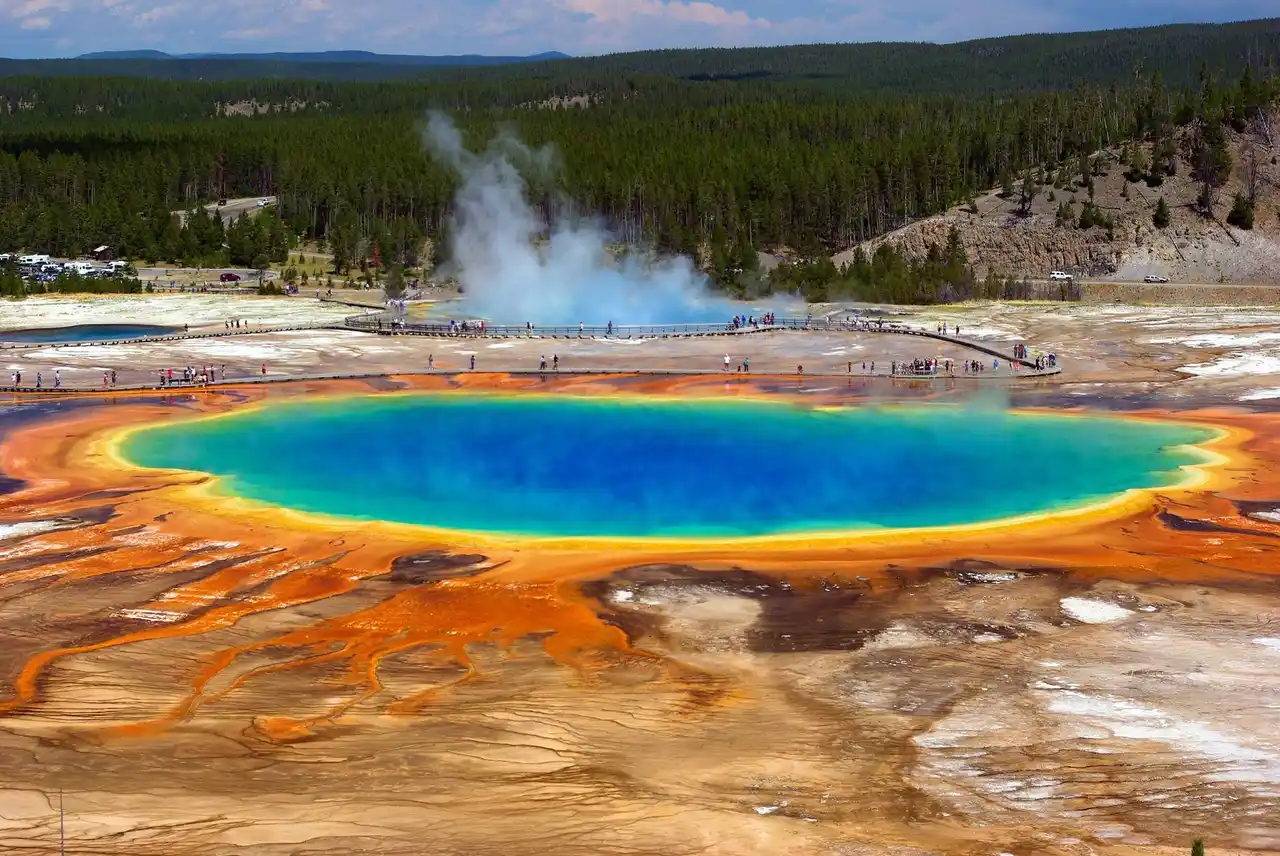
Have you ever seen water that looks like a rainbow painted on the earth? That’s exactly what you’ll find at Grand Prismatic Spring, the largest hot spring in the United States and Yellowstone’s most photographed natural wonder. Like a giant natural watercolor, this massive pool spans larger than a football field, with bands of blue, green, orange, and brown rings created by tiny heat-loving organisms. While the center glows a deep blue at around 170°F, you’ll want to stick to the boardwalk that circles this natural masterpiece – it’s one of those rare places where the photos really don’t do justice to seeing it in person. For the best views, head up to the nearby overlook platform, where you can take in the full scope of this geological marvel against the backdrop of steam rising into the mountain air.
Mammoth Hot Springs
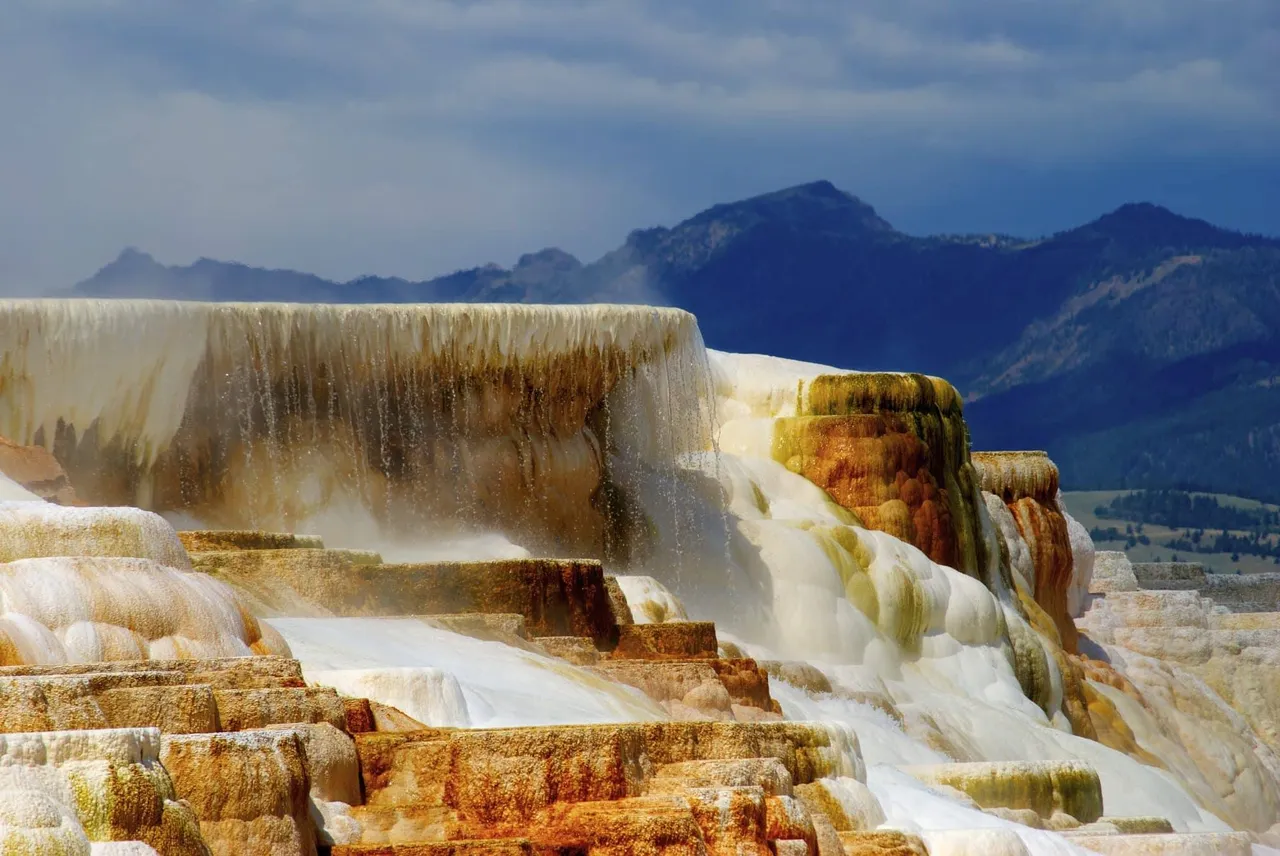
Located in the northern section of Yellowstone, Mammoth Hot Springs looks like a cave turned inside out. Limestone terraces stack upon each other like nature’s own outdoor theater, with steaming water flowing down the milky-white steps. Unlike the park’s other geothermal features, these springs are constantly changing – what you see today might look completely different next month. The nearby historic Fort Yellowstone buildings, now serving as park offices and visitor facilities, tell stories of the park’s early military days. You’ll often spot elk grazing on the lawns here, seemingly unbothered by tourists snapping photos. The springs’ unique formations come from limestone dissolving in the hot water, creating new terraces while others go dormant, making each visit a different experience.
Norris Geyser Basin
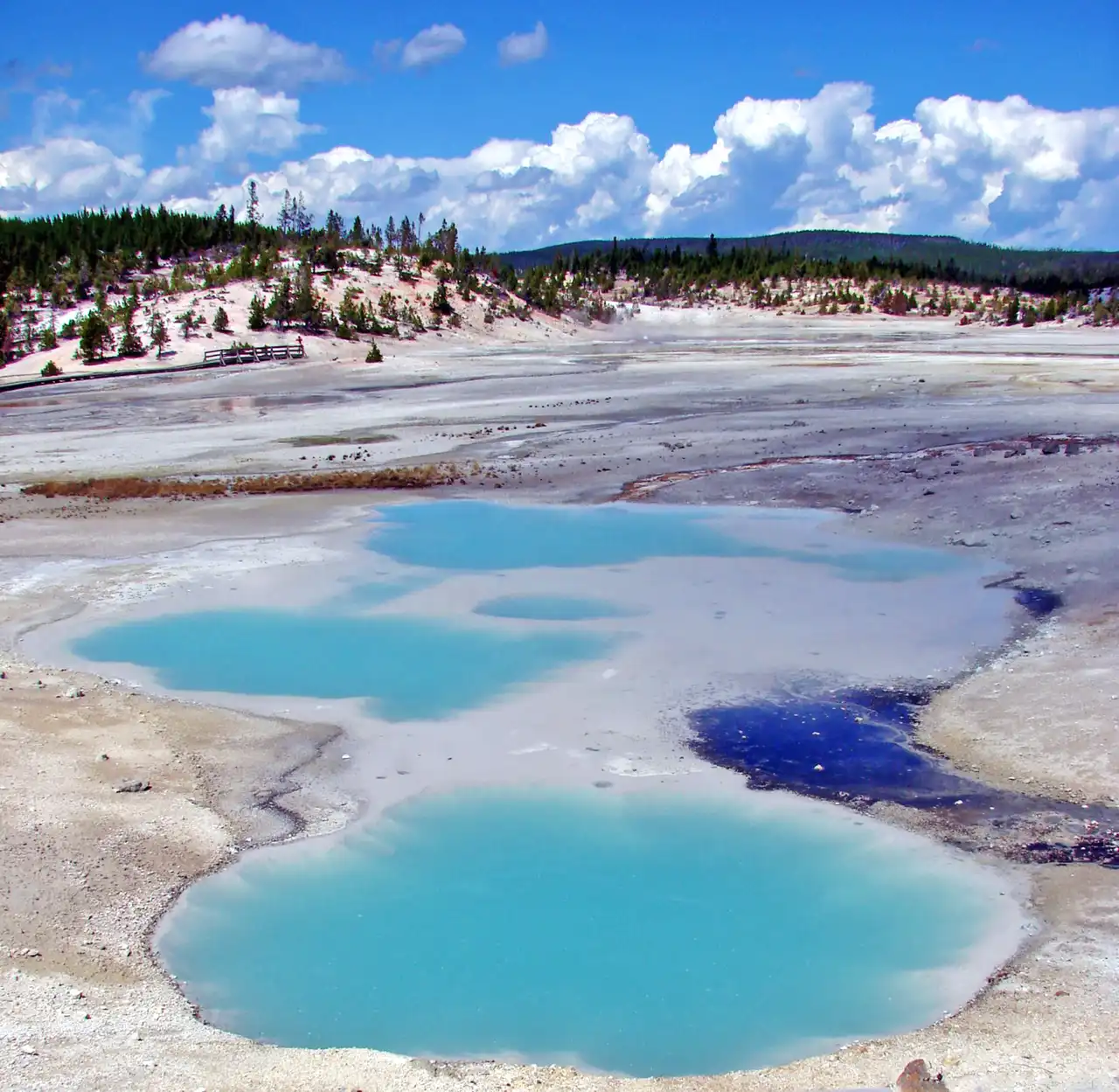
Ever seen steam rise from countless geothermal features across a moonlike landscape? That’s the daily scene at Norris Geyser Basin, the hottest and most active thermal area in Yellowstone. This otherworldly spot features two distinct areas – Porcelain Basin and Back Basin – where you can walk on boardwalks past bubbling mud pots, steaming vents, and colorful hot springs. The star attraction here is Steamboat Geyser, the world’s tallest active geyser, which can shoot water up to 300 feet in the air when it erupts. You’ll find interpretive signs along the trails that tell the fascinating story of how these thermal features formed over thousands of years.
Upper Falls of the Yellowstone River
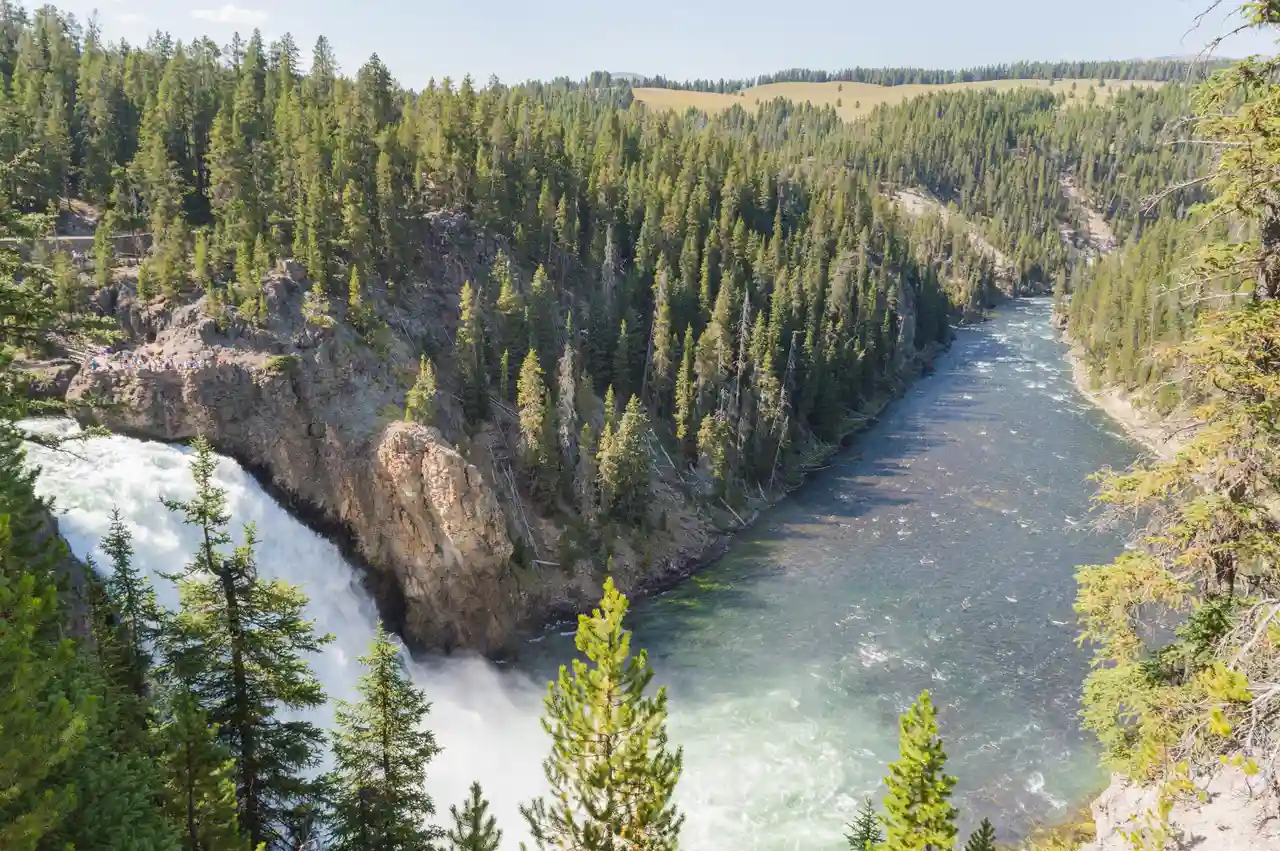
When it comes to Yellowstone’s most memorable sights, the Upper Falls of the Yellowstone River ranks near the top of my list. This 109-foot waterfall thunders down through the golden-colored canyon, creating a natural spectacle that pulls you in from the moment you arrive. You can view the falls from several angles along the paved walkways, but my favorite spot is Artist Point, where you’ll see both the falls and the river valley stretching into the distance. While it’s not as tall as its downstream neighbor (the Lower Falls), the raw power of the water plunging over the cliff edge makes this spot special. It’s the kind of place where you’ll want to linger, listening to the constant roar of the water and watching as the morning light plays across the mist.
Lower Falls of the Yellowstone River
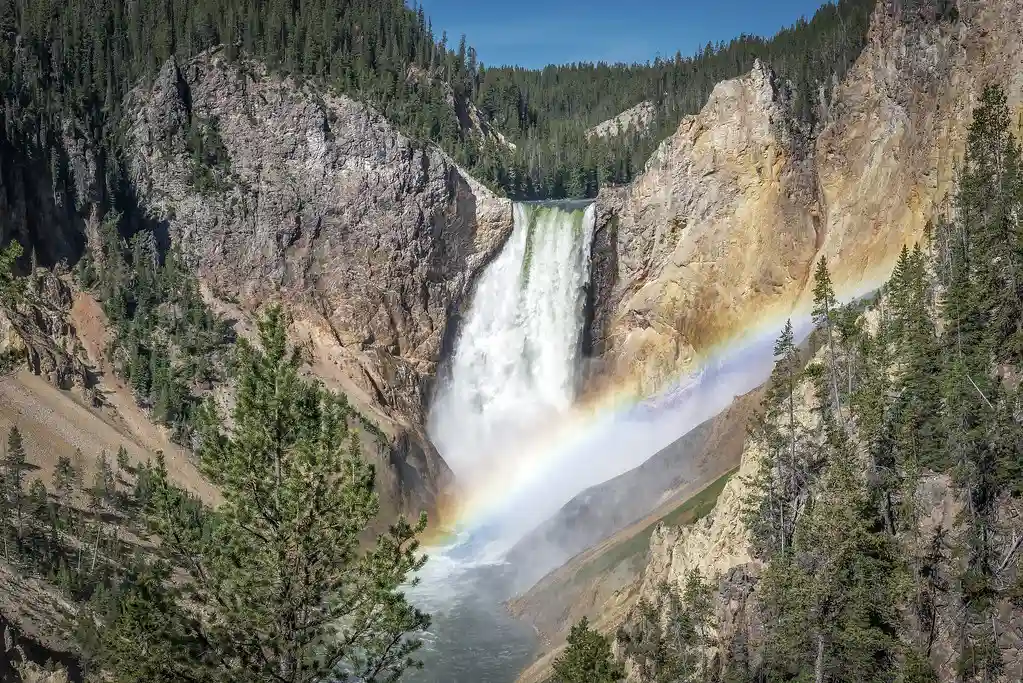
At nearly twice the height of Niagara Falls, the Lower Falls of Yellowstone plunges 308 feet into the Grand Canyon of Yellowstone, creating one of the park’s most photographed sights. Like many of the park’s natural wonders, these falls have been shaped by centuries of volcanic activity and erosion, giving them their distinctive appearance. From the viewing platform at Artist Point, you can watch as the Yellowstone River crashes down in a powerful display, sending up a constant mist that creates rainbows on sunny days. What makes this spot even more special is how the surrounding canyon walls, colored in shades of yellow and rust from ancient hot springs, frame the falls perfectly. And if you’re up for a bit of adventure, take the steep but rewarding trail down Uncle Tom’s Trail for a closer look at this impressive natural spectacle.
Lamar Valley
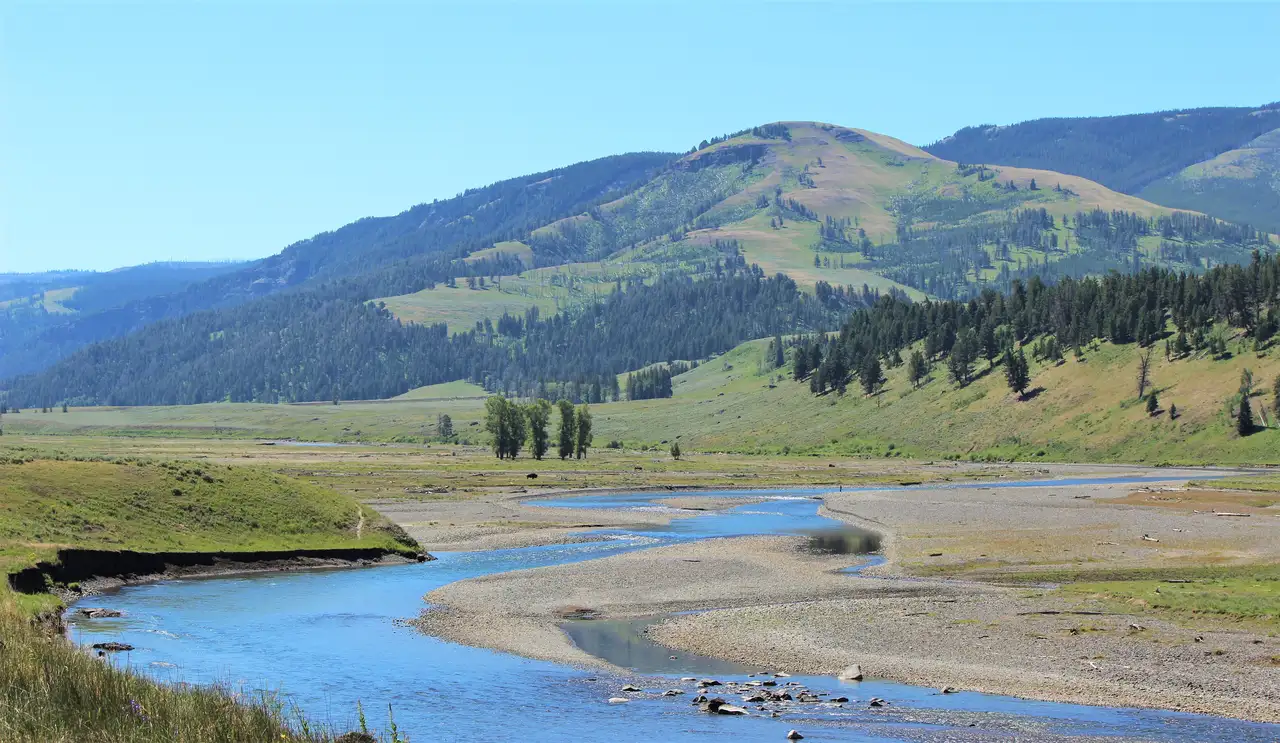
Experience Yellowstone’s best wildlife viewing in Lamar Valley, often called “America’s Serengeti” by park regulars. This wide-open valley gives you front-row seats to watch herds of bison roam freely, while wolves and grizzly bears hunt in the distance. Pack your binoculars and head out at dawn or dusk when animals are most active – you might spot coyotes, pronghorn antelope, and eagles going about their daily routines. For the best experience, pull into one of the roadside turnouts and join the friendly community of wildlife watchers who gather here with their spotting scopes, ready to point out where the action is happening.
Hayden Valley
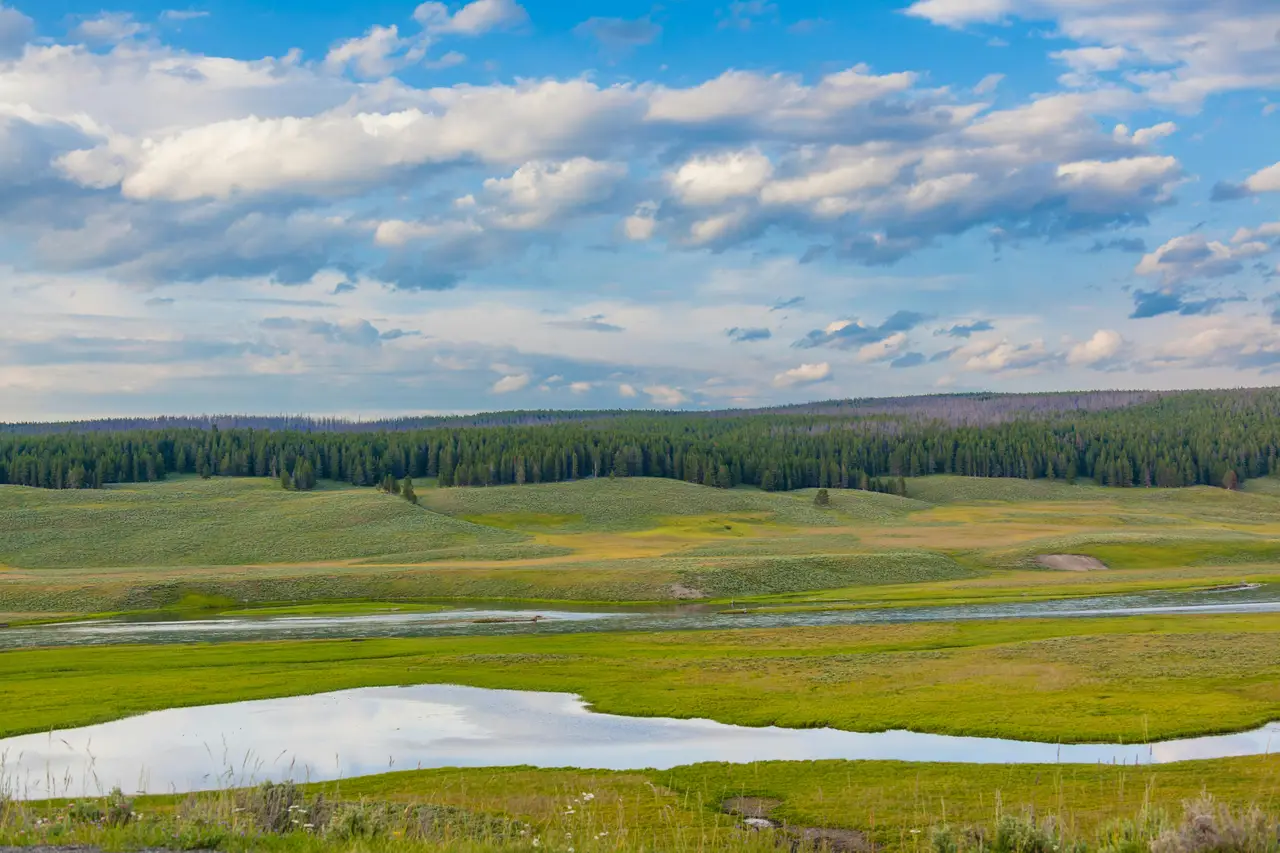
Ever wondered what it’s like to see hundreds of bison roaming freely across open meadows? That’s exactly what you’ll find in Hayden Valley, a wide grassland paradise in the heart of Yellowstone. This sweeping valley is one of the park’s prime spots for wildlife watching, where grizzly bears lumber through the sage brush and wolves patrol their territory at dawn and dusk. You can pull over at numerous lookout points along the Grand Loop Road to scan the landscape with binoculars, or join the eager photographers who line up each morning to capture the valley’s famous residents in action. The Yellowstone River winds lazily through the valley, creating prime habitat for elk, coyotes, and countless birds that call this ecosystem home.
Grand Canyon of the Yellowstone
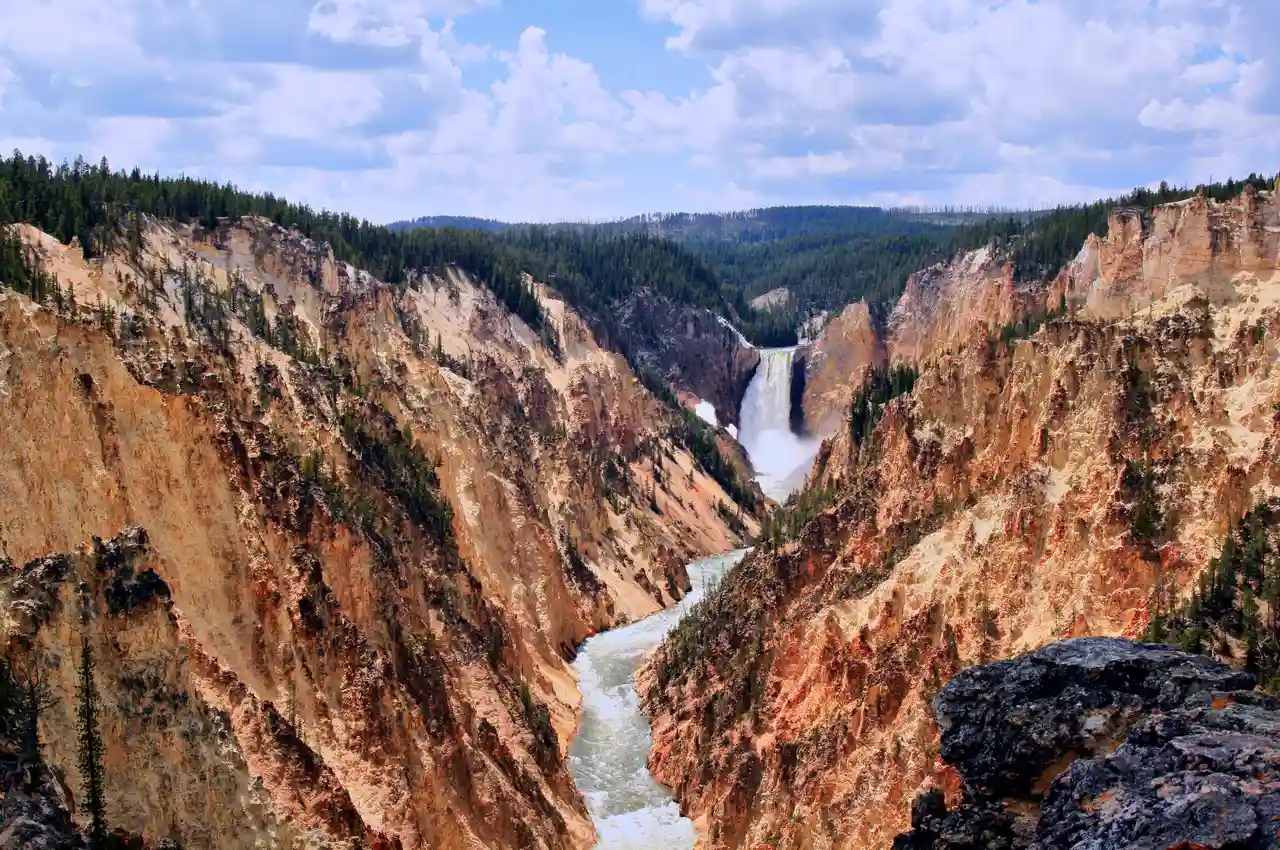
If there’s one place in Yellowstone you absolutely can’t miss, it’s the Grand Canyon of the Yellowstone. Carved by the Yellowstone River over thousands of years, this 20-mile long canyon features two major waterfalls – the Upper and Lower Falls – and colorful rock walls that range from yellow to pink to orange, showing off the park’s volcanic history.
West Thumb Geyser Basin

Looking out over Yellowstone Lake, the West Thumb Geyser Basin feels different from the park’s other thermal areas. Here, you’ll find a collection of hot springs and geysers right along the lakeshore, creating an unusual mix of thermal features and deep blue waters. The wooden boardwalk takes you past pools like the famous Fishing Cone, where early visitors would catch fish from the lake and cook them directly in the hot spring. It’s a relatively small basin compared to others in the park, but the way the steam rises off the water against the backdrop of the lake makes it worth stopping. Walking the half-mile loop, you’ll get a chance to see how Yellowstone’s geothermal activity interacts with one of America’s largest high-altitude lakes.
Lake Yellowstone
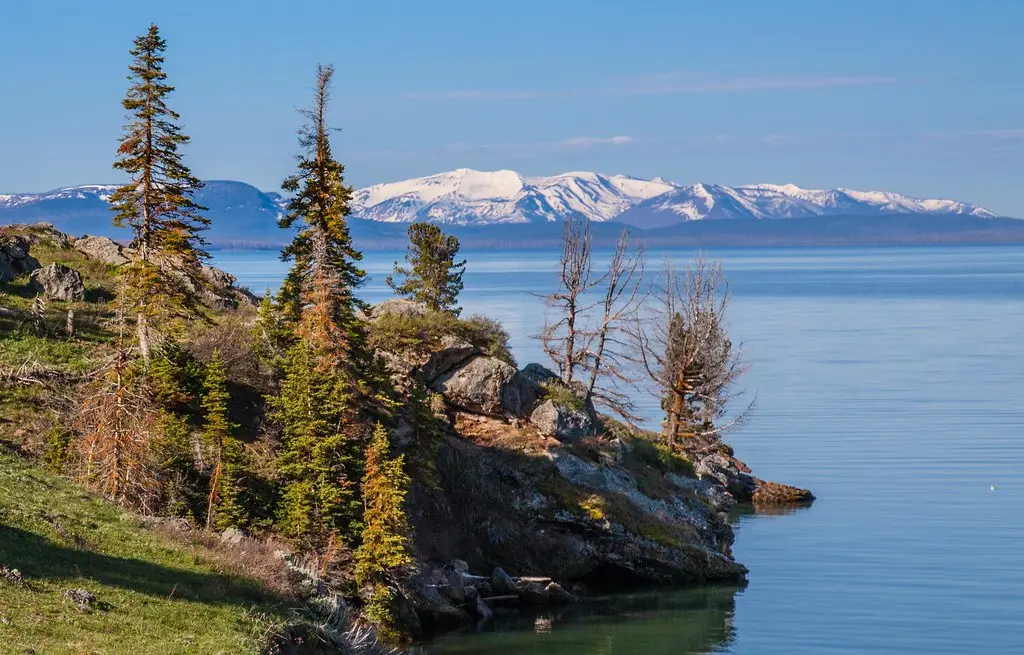
Lake Yellowstone holds a special place in my heart as the crown jewel of the park’s water features. This massive body of water, stretching over 130 square miles, sits perched at 7,733 feet above sea level, making it North America’s largest high-altitude lake. While most visitors come to snap photos of the geysers, I’ve found that the lake offers its own kind of magic – from fishing boats dotting the surface in summer to the steam rising off the water on crisp autumn mornings. You can spend your time here watching for otters along the shore, casting a line for native cutthroat trout, or taking one of the scenic boat tours that share tales of the lake’s volcanic past. It’s not just another pretty view in the park – it’s a place where you can truly feel Yellowstone’s wild spirit.
Mount Washburn
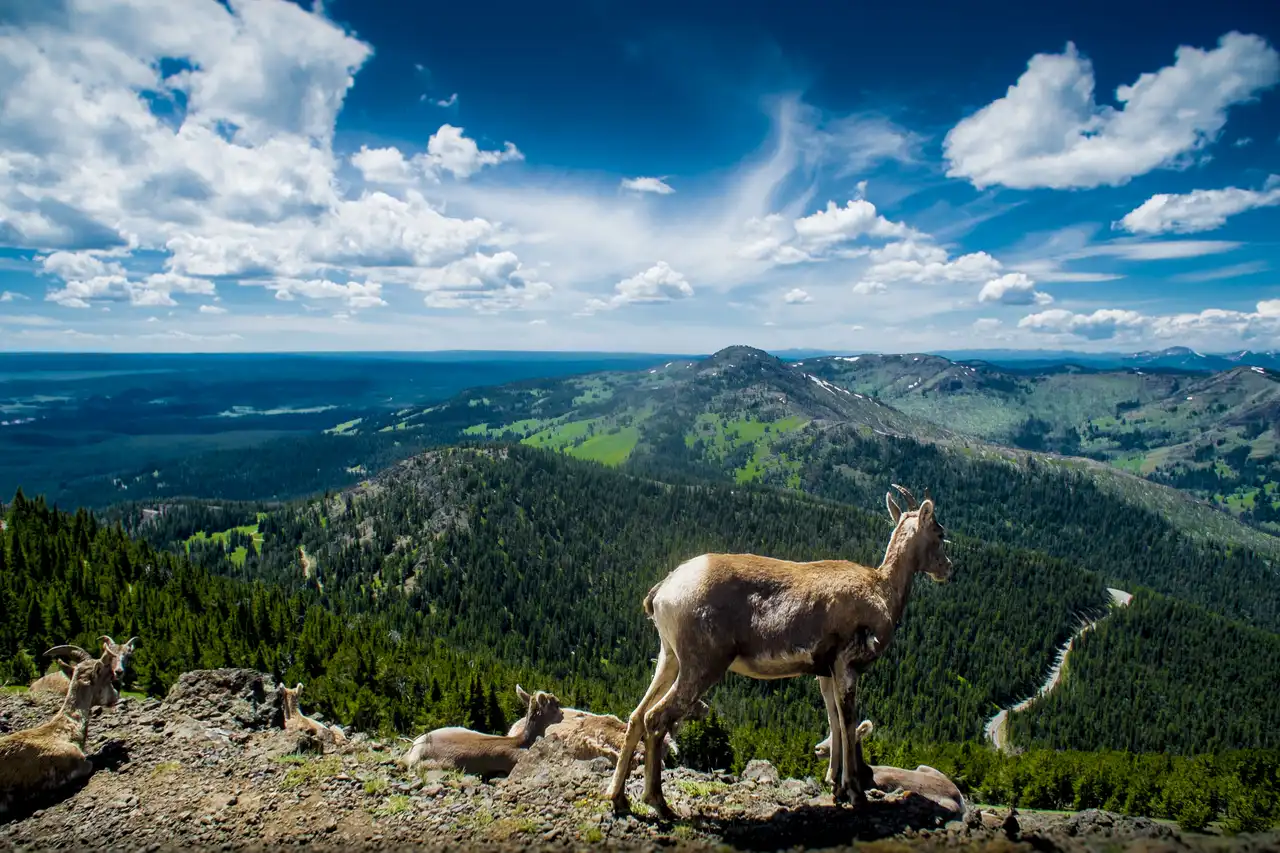
Mount Washburn has been my favorite hike in Yellowstone since my first visit in 2015. Standing proud at 10,243 feet, this peak offers some of the best panoramic views in the entire park, with wildflower meadows dotting the landscape below. The 6.2-mile round-trip trail winds its way up through alpine terrain, where bighorn sheep and mountain goats often make appearances along the rocky slopes. At the summit, you’ll find a fire lookout tower that’s still in use today, giving you a chance to see how park rangers keep watch over this vast wilderness. The clear days here are particularly special – you can see the Grand Canyon of Yellowstone to the south and the Absaroka Range stretching endlessly to the east, making all that uphill effort worth every step.
Artist Point
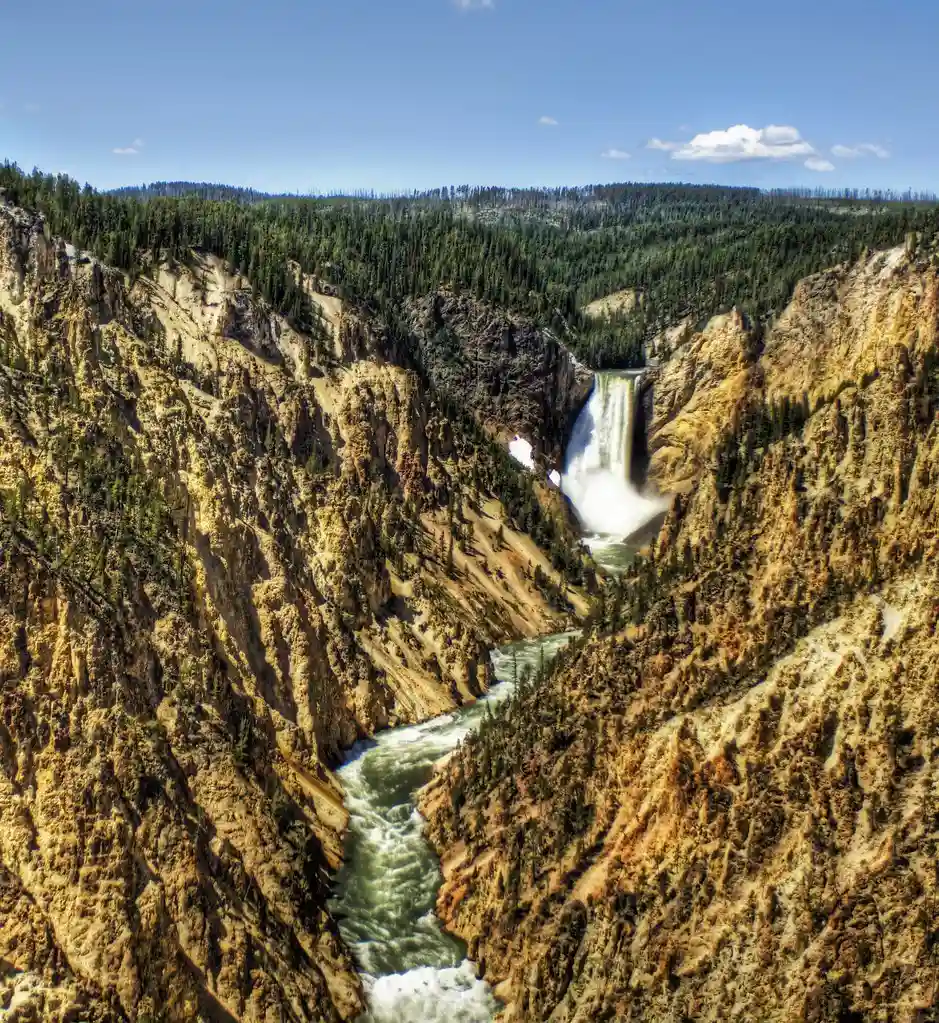
Of all the viewpoints I’ve experienced in Yellowstone, none leave an impression quite like Artist Point. This cliff-edge overlook gives you a front-row seat to the park’s famous Grand Canyon, where the Yellowstone River crashes down 308 feet in a powerful display. From here, you can see exactly why early explorers and painters chose this spot to capture the canyon’s golden walls and rushing waters on canvas. It’s not just another photo stop – the views here actually tell the story of Yellowstone’s volcanic history through layers of rock and the persistent thermal features that still steam along the canyon walls. While it can get busy during peak season, coming at sunrise lets you soak in the scene in relative peace.
Tower Fall
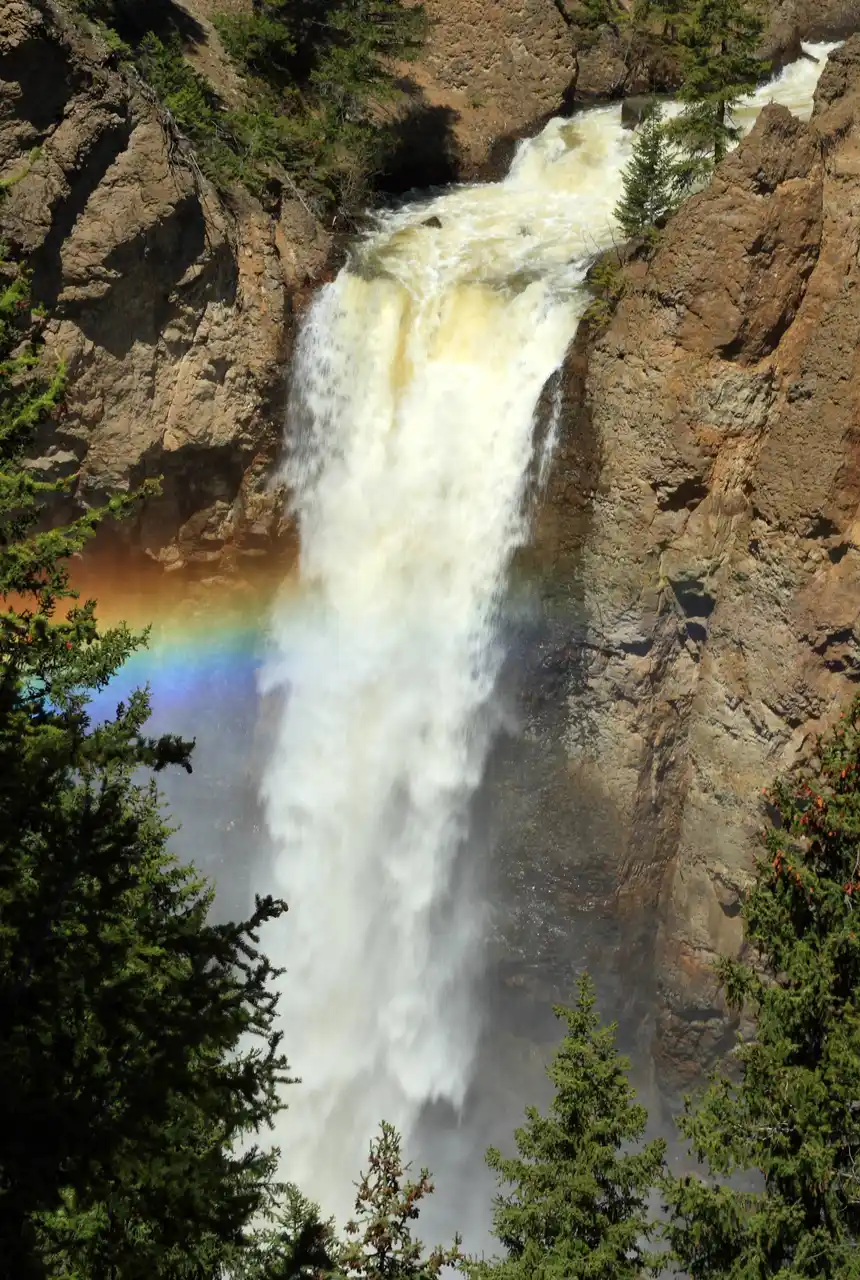
Ever watched a 132-foot waterfall plunge dramatically into a narrow canyon? That’s the daily show at Tower Fall, where crystal-clear water drops from volcanic pinnacles that look like ancient castle towers. Located in the northeastern corner of Yellowstone, this natural wonder has been catching visitors’ eyes since the 1870s, when frontier artist Thomas Moran helped put it on the map. You can take in the view from an easy-access overlook just off the main road, or follow the short trail down for a closer look at the creek below. While the original trail to the base of the falls is now closed, the upper viewpoint offers plenty of photo ops, and you might even spot bighorn sheep scaling the rocky cliffs nearby.
Boiling River
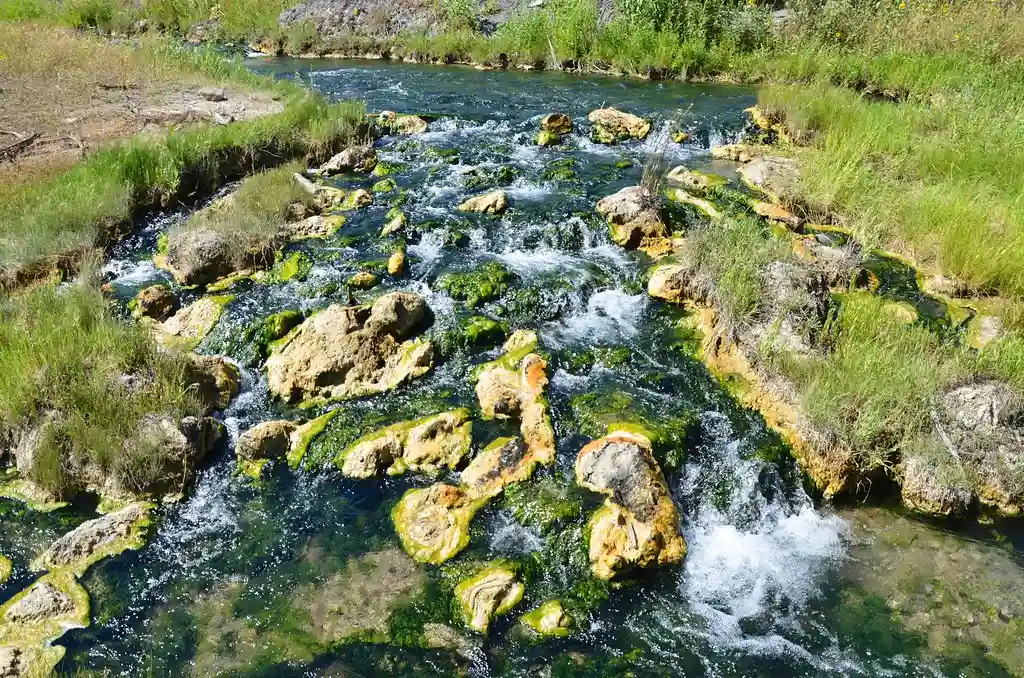
Just north of Mammoth Hot Springs, where the cold Gardner River meets scalding hot spring water, you’ll find the Boiling River – one of Yellowstone’s most unique swimming spots. Unlike the park’s other thermal features that are strictly off-limits, this is one of the few places where you can actually take a dip. The mix of hot and cold creates natural soaking pools where temperatures hover around 100°F (38°C), perfect for relaxing after a long day of hiking. Local swimmers have carefully arranged rocks to create small pools, and you’ll often find people soaking year-round, even when snow blankets the surrounding landscape. Because of its location near the park’s north entrance, it tends to be less crowded than other attractions, making it feel like a hidden gem that mostly locals know about.
Firehole Lake Drive
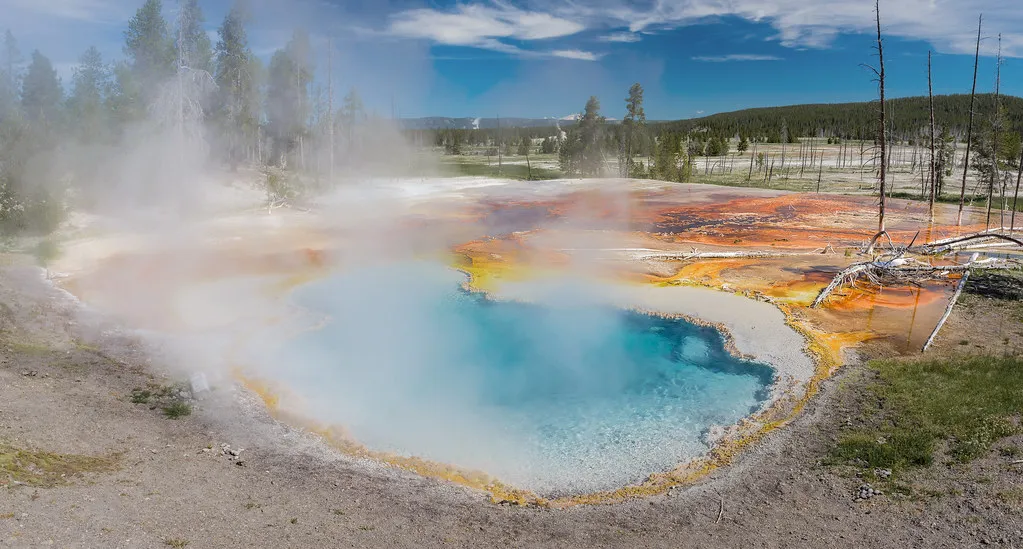
If you’re looking for an off-the-beaten-path gem in Yellowstone, make sure to explore Firehole Lake Drive. This three-mile, one-way road takes you past some of the park’s most active geothermal features, including Great Fountain Geyser, White Dome Geyser, and Pink Cone Geyser. Along the way, you’ll spot steaming hot springs and bubbling mud pots that showcase the park’s remarkable volcanic activity.
Mud Volcano
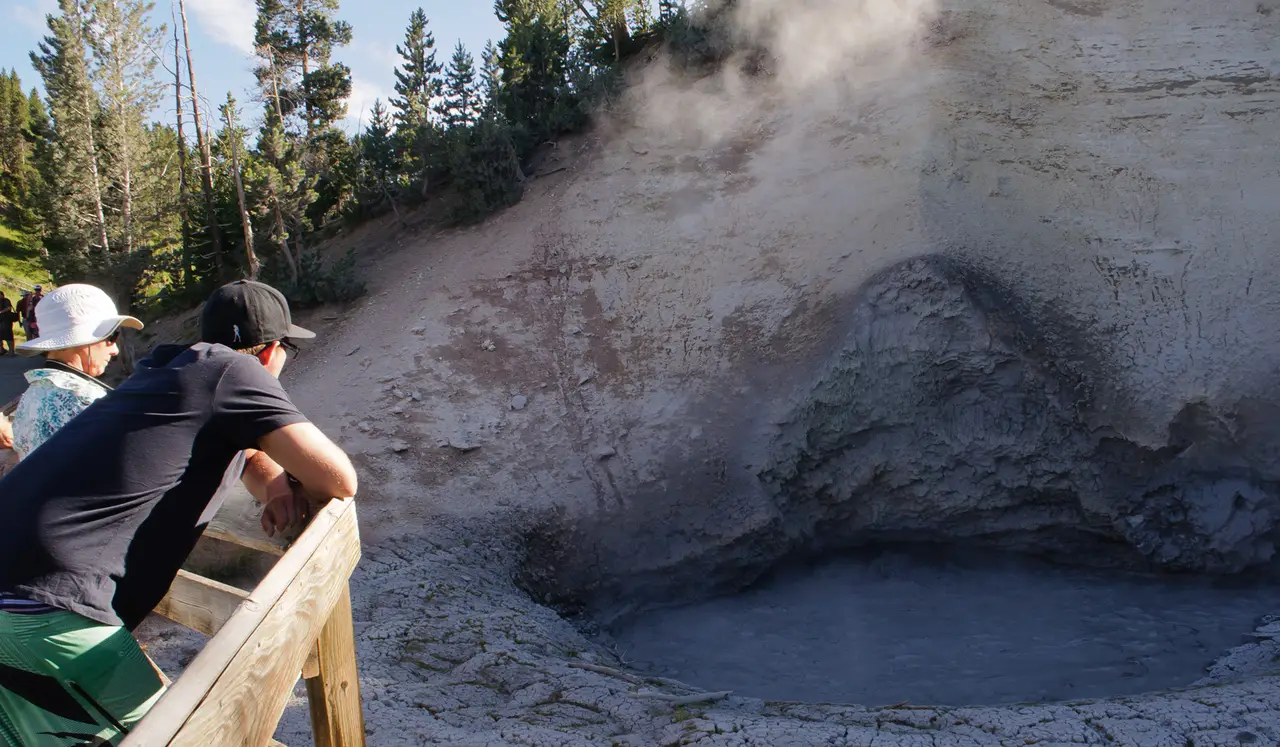
Ever witnessed the Earth literally bubbling and steaming right before your eyes? That’s exactly what you’ll find at Mud Volcano, where Yellowstone’s geothermal underbelly puts on a memorable show. This collection of bubbling mud pots, steam vents, and sulfuric springs offers visitors a front-row seat to the park’s raw volcanic activity. A series of boardwalks leads you past features like Dragon’s Mouth Spring, where hot water sloshes in and out of a cave with a roaring sound, and the aptly named Black Dragon’s Caldron. The area’s distinct rotten-egg smell might wrinkle your nose, but it’s all part of experiencing one of the most active hydrothermal areas in the park, where you can watch nature’s kitchen at work.
Black Sand Basin
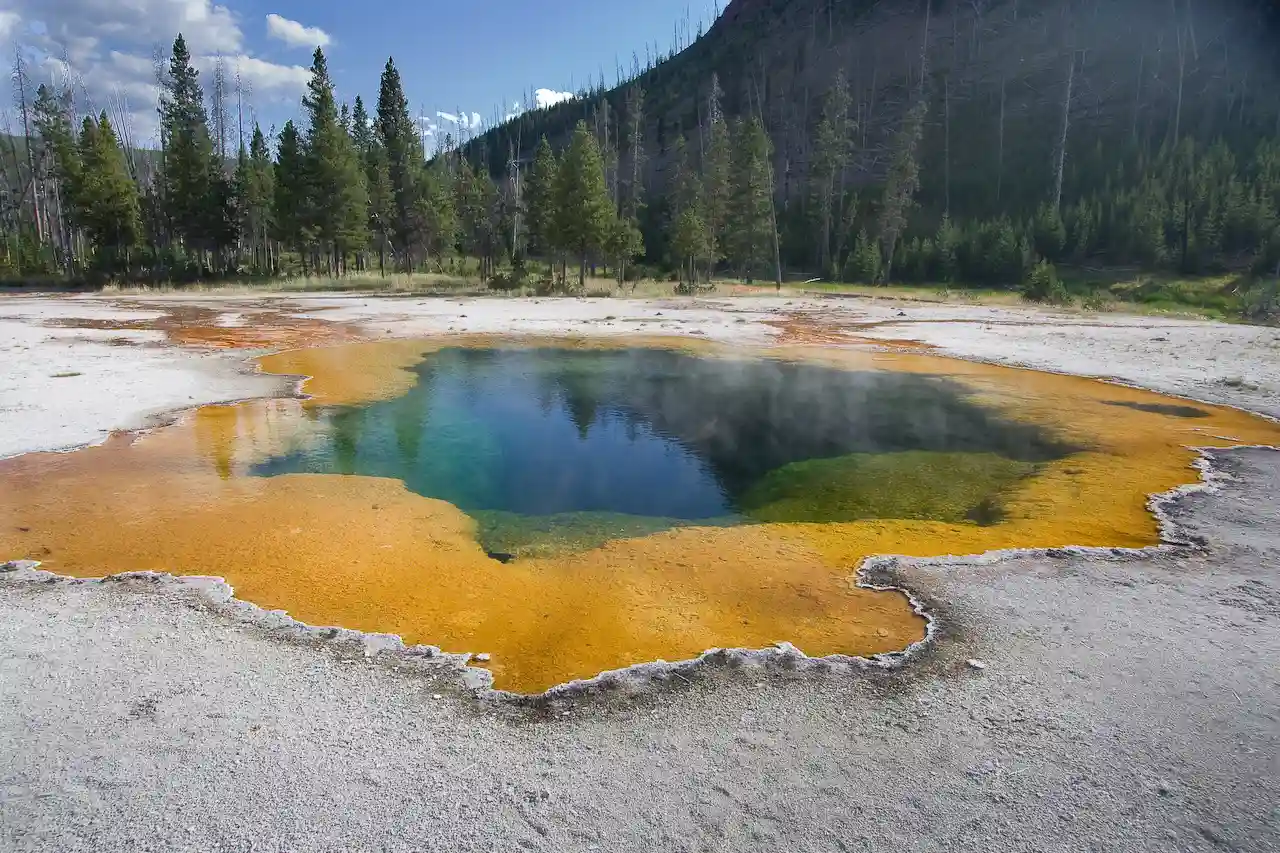
Located in the heart of Yellowstone’s geothermal wonderland, Black Sand Basin draws visitors with its collection of colorful hot springs and ever-changing geysers. The area gets its name from the dark volcanic glass fragments scattered across the ground, creating paths that wind between the thermal features. While many people come here to see the famous Cliff Geyser, which erupts every few hours from its position on the edge of Iron Creek, the basin offers several other notable attractions. The emerald-colored Emerald Pool and the constantly bubbling Rainbow Pool provide excellent photo opportunities, and the well-maintained boardwalk makes it easy to explore the area safely. You can typically see the entire basin in about 30 minutes, making it a perfect stop between Old Faithful and the Upper Geyser Basin.
Fountain Paint Pot
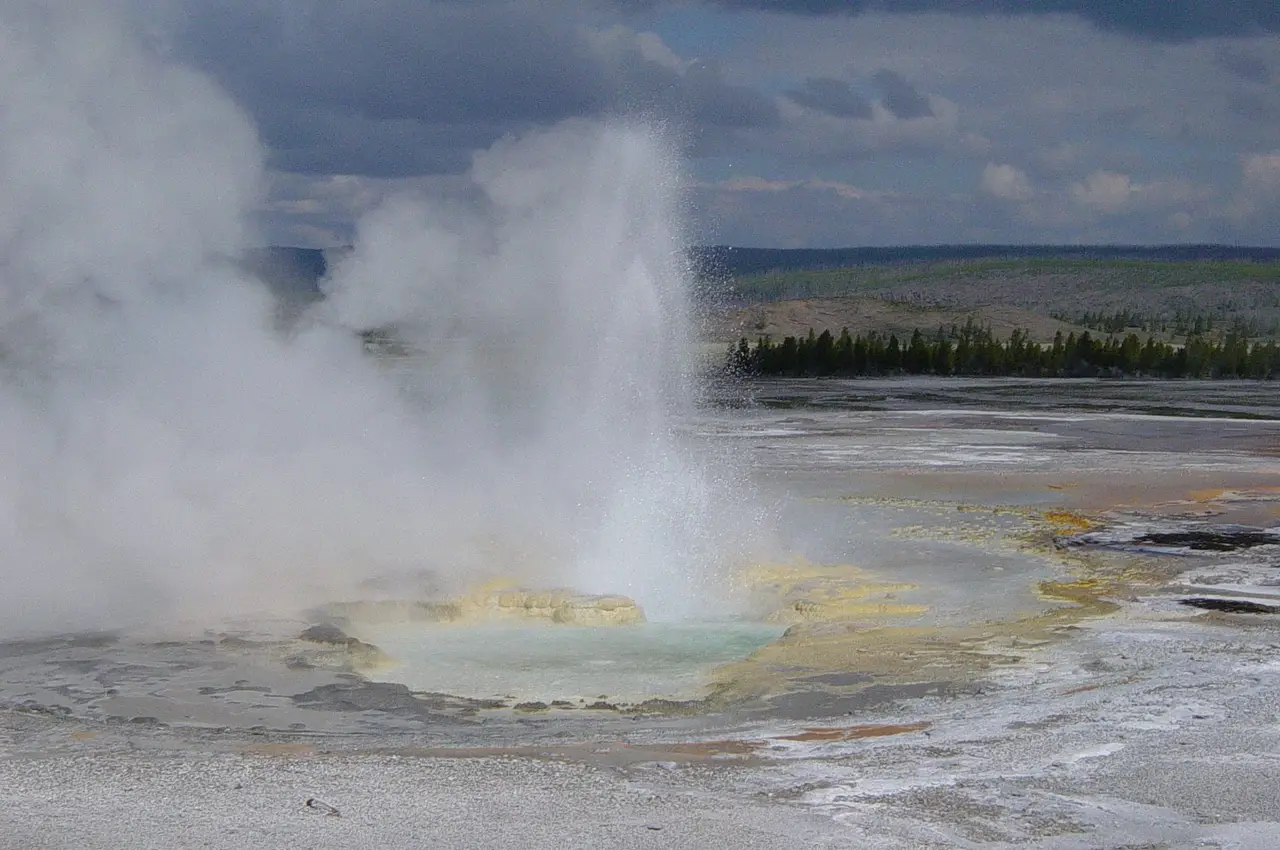
The Fountain Paint Pot area in Yellowstone showcases all four types of thermal features you can find in the park – geysers, hot springs, mud pots, and fumaroles. Unlike other thermal spots that focus on just one type of feature, this accessible boardwalk trail lets you see the whole range in one compact area. The mud pots are especially fun to watch as they bubble and splatter like pots of cooking oatmeal, their colors ranging from gray to reddish-brown depending on the minerals present. What’s particularly interesting is how the features change throughout the year – in spring, the mud becomes thinner and more active from rainwater, while summer brings thicker, gloopy bubbles. Many visitors make this their first stop to understand Yellowstone’s geothermal activity, as it’s like getting a crash course in the park’s volcanic nature.
Morning Glory Pool
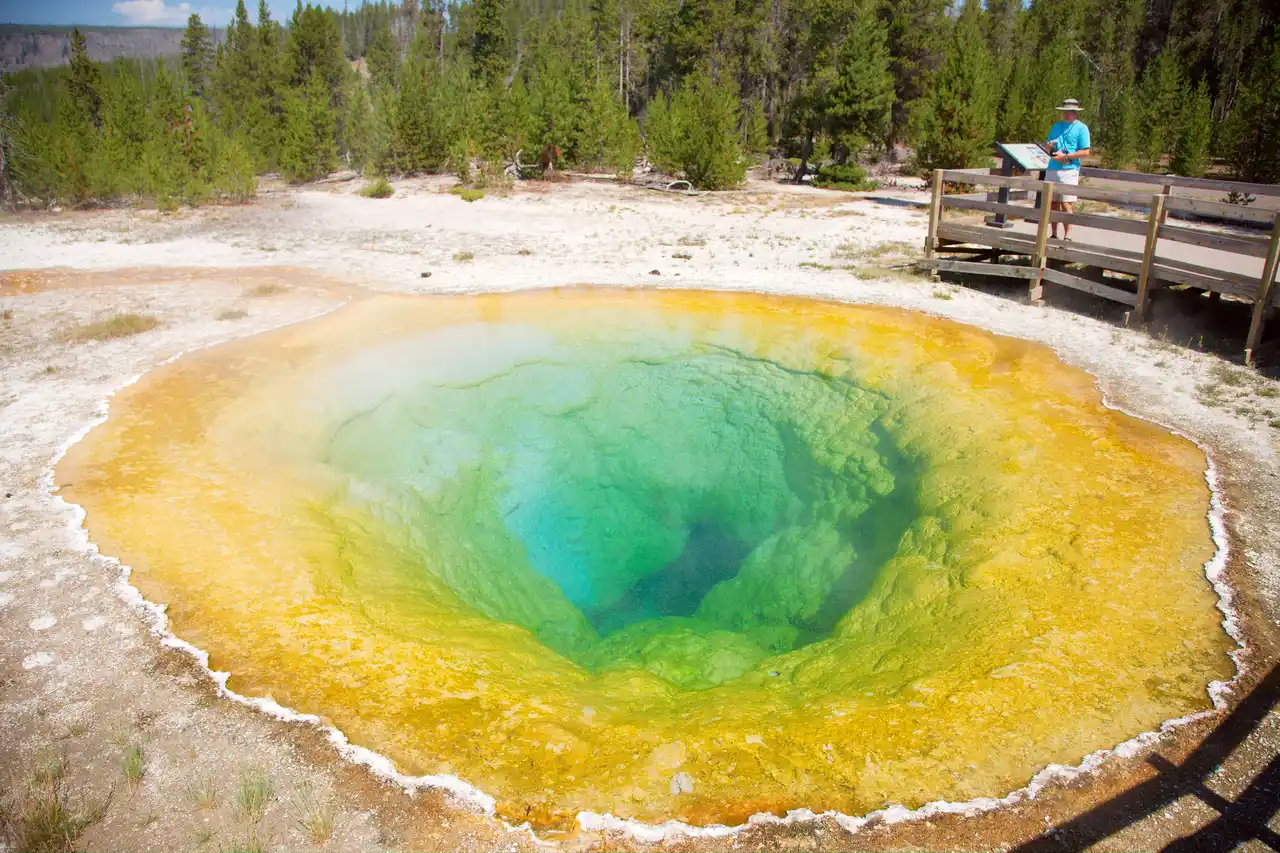
Nature lovers flock to Morning Glory Pool for its colorful hot spring waters, but this thermal feature tells a deeper story about Yellowstone’s changing landscape. The pool’s blue-green center fades to orange and brown around the edges, creating a natural color wheel that shifts with temperature variations. While the pool was named for its resemblance to the morning glory flower, its colors have actually changed over time due to visitors tossing coins and debris into its depths. Despite these changes, Morning Glory Pool remains one of the park’s most photographed attractions, and the short boardwalk trail leading to it offers additional views of other thermal features along the way.
Dragon’s Mouth Spring
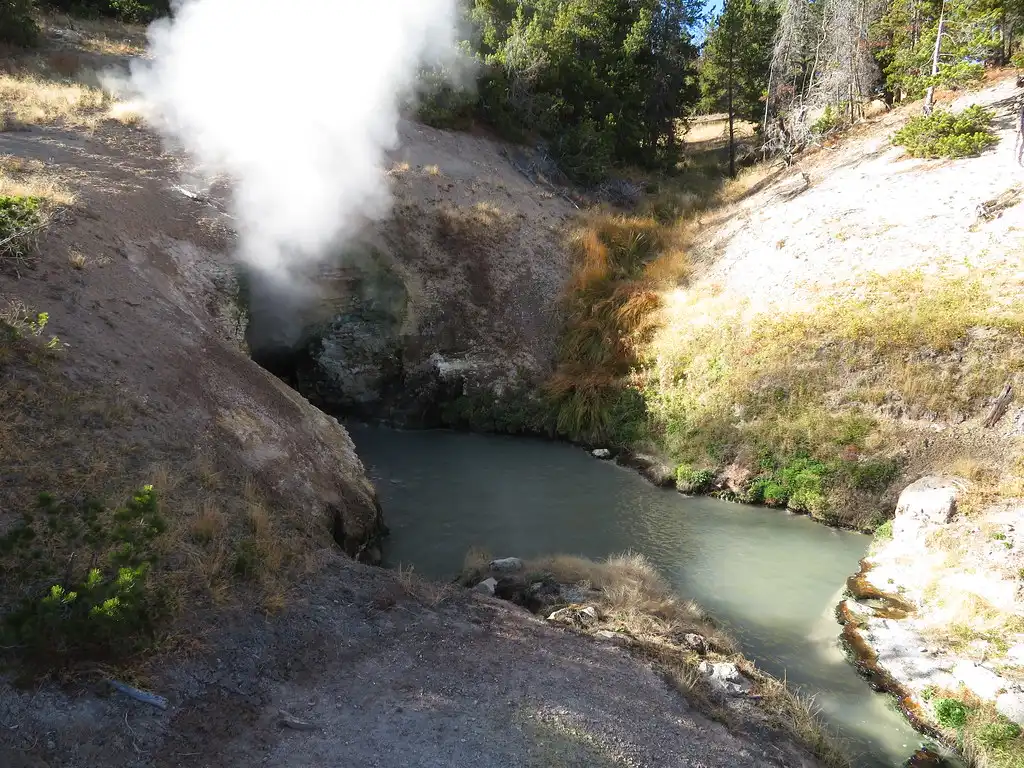
Listen to the eerie growls and hisses at Dragon’s Mouth Spring, a unique thermal feature that lives up to its mythical name. This bubbling hot spring releases steam and water from an underground cave, creating sounds that genuinely resemble a dragon’s roar. Located in the Mud Volcano area, the spring sits in a cave-like opening where hot water splashes rhythmically against the walls, producing an otherworldly show of steam and sound. It’s an easy stop along the main road, with a short boardwalk that lets you get close enough to feel the heat and witness this geological wonder in action.

